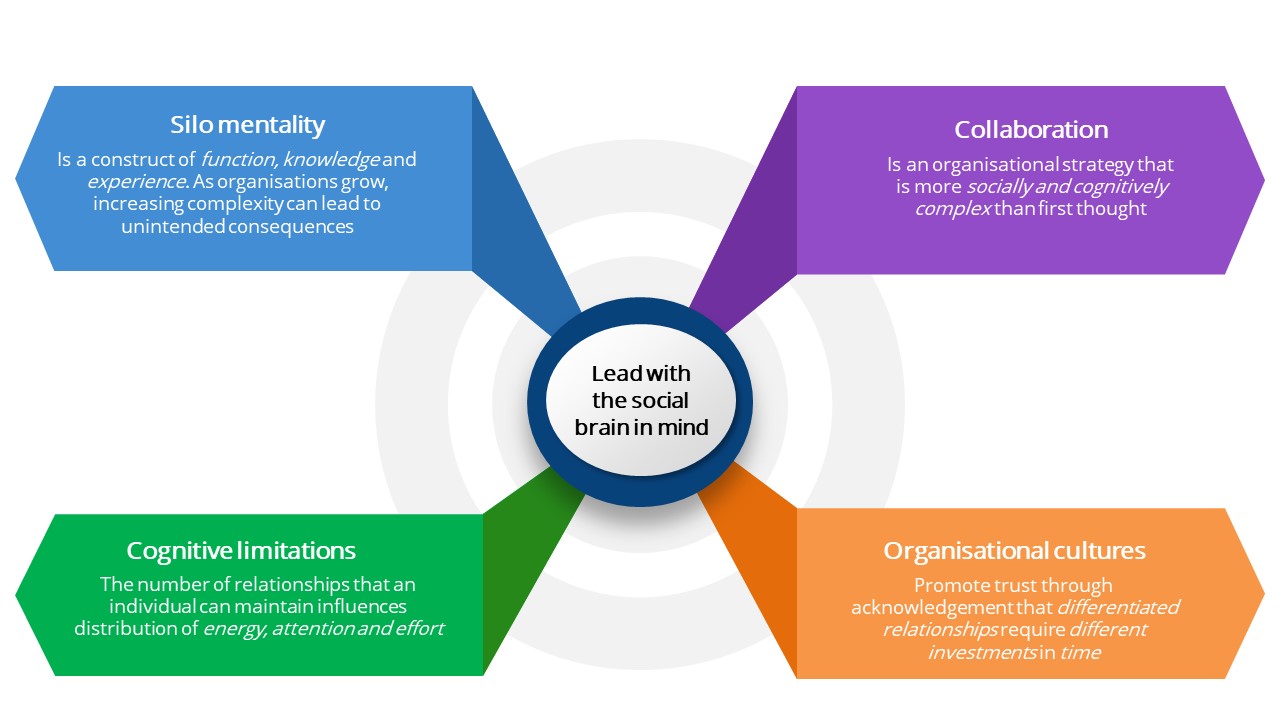
Lead with the social brain in mind is a framework that applies the existence of associations among organisational structures that are employed in schools to manage large groups of people (e.g., departments, teams, year levels) and cognitive constraints for human interactions (social brain theory). The changing and evolving nature of educators’ work means that there are multiple demands vying for attention, often simultaneously, in the time available. It is not surprising then, that this places cognitive constraints on individuals as they make the mental shifts to accommodate different types of relationships and associated tasks within limited time frames. Employing this framework can support leaders in their investigations of what is working and not working in their contexts. These tools work more effectively when based on the best available data, rather than on instinct or opinion. Frameworks can also help leaders to better communicate and explore ideas with their teams.
First step…collect some data
- List the categories that your school uses to describe school relationships (students, teachers, teaching team…)
- Identify the number of people, within the categories you listed, that you have direct contact with throughout the course of a “typical” school week.
- From that list identify the purpose for interaction using the following categories (support student learning, support my own learning, support both, none of these)
- Record how often you meet (every day, 2-3 times a week, once a month, once a term, once a semester, once a year).
- How would you describe the strength of these relationships (Very Strong, Strong, Less strong, Not strong, Not applicable). Why? For example…we have frequent and/or purposeful contact that has lead to enduring, long-lasting connections.
Next step – Data analysis
- What do we notice? What haven’t we noticed?
- What are the inherent complexities and challenges in our context that arise when implementing structures for collaboration?
- What resources do we need, have, adjust, or deploy elsewhere?
- How might we use this framework as a lens for reflection, exploration, and dialogue?
- What further learning is required?
Leading with the social brain in mind offers school leaders ways to think about implementing and critically reviewing sustainable, realistic, and impactful collaboration that takes place within their contexts. Purposefully leading collaboration as a strategy for improvement requires intentionality that reflects schools as complex work environments.
